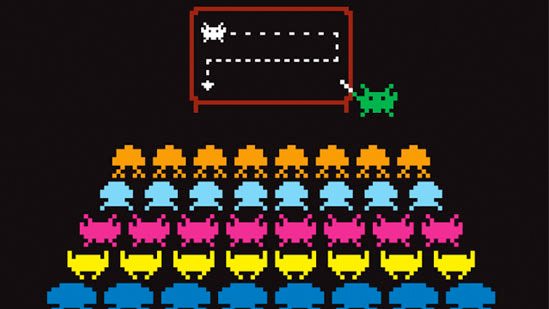Post by Fadril Adren on Sept 10, 2016 23:12:56 GMT -5

This article was written by Anvil from Frontline Gaming.
Welcome back to another Age of Sigmar Tactics article! Check the Tactics Corner for more AoS goodness!
My name is Anvil, and before we get started, I want to apologize for the long waits between articles. It has been a hectic and miserable few months dealing with terrible neighbors, little sleep, and moving to a new place. I have finally gotten settled in, we got internet up last week, and everything is finally falling into place. I’m back and excited to crank out these articles much faster now that I have a good environment to work in.
Today, we are going to be covering a subject that I feel helps the games stay interesting from a tactics stance: Battleplans. Battleplans, for those that do not know, are missions that provide new rules and objectives to have players figure out how to use their army differently. Battleplans are great for planning out a campaign to run with your group, or to make the game a little bit more even between the players. We will cover the basic structure of a battleplan, what to expect, and things to consider when you create your own for the purposes of either casual or competitive play. For today’s article, we’re assuming that the scenarios are between 2 players, as GW has yet to release a lot of battleplans that incorporate more players (they do exist, though). Don’t forget, be sure to check out the Tactics Corner for more articles like this one for both Age of Sigmar and other great tabletop games!

Why Play Battleplans?
When you first start playing AoS, you’ are most likely introduced to the basic setup rules and the Sudden Death objectives for your first games. These are great for quick matches and keeping the game simple to practice your army with. However, it can get repetitive, and eventually just turn into a slog of bodies mashing into each other in the middle of the table. Some people really enjoy that kind of gameplay, and there’s nothing wrong with that. But other players like the challenge of making difficult, meaningful choices. A game can hinder on being aggressive at the right time with your general, or placing your reinforcements to draw the enemy forces in a way to open up space to a piece of terrain that needs to be destroyed by the Flanking units you hid behind a building. Those are games I remember the most and are exciting to retell later. I honestly can look back at most of my games that I have played, and 90% of the time it came down to a bad choice that cost someone the match, and not because of the size of the forces. Battleplans bring changes such as how to set up your forces, new Command Abilities, rules that benefit or hinder units with certain keywords, an ‘X’ factor to bring both armies closer to power levels as the game progresses, time limits, Major and Minor victories, etc.

Knowing The Enemy Enables You to Take the Offensive, Knowing Yourself Enables You to Take the Defensive
Most battleplans you will play will have two sides to choose from: the Aggressor or the Defender. If the forces are similar in size, then the players can either roll off to see which side they will play, or mutually agree on what they want. Sometimes, it just works out that way. Most of the time, if one player has a third more models than the other, they will usually be assigned the aggressor role. This is something that you want to keep in mind as you are adding on to your army or choosing what to include. The more elite forces you take, the more likely you are going to play as the defender, and the more horde-like forces will usually be the aggressor. If you fully intend to fight as one or the other, then it helps to plan out which units will fit that role best. To me, army composition is less about how many of each unit I take, and more about which units I take. Aggressors want more attacks, more speed, more models, longer range on their melee weapons to accommodate for those numbers, and high damage, especially with mortal wounds. Defenders want higher wounds, larger bases, better saves, better Bravery, longer shooting ranges, and healing.

Appear at Points Which the Enemy Must Hasten to Defend; March Swiftly to Places Where You Are Not Expected
Sometimes, your battleplan will tell you to place your entire army on one side of the board while your opponent does the same at the opposite end. But, it is more likely that you will not get that luxury. Some scenarios force one player to set up only a fraction of their army away from any board edge, while the opponent is positioned to slam you from one side. Other times, you will be focused in the center of the table, holding off waves of enemies from all directions and making your forces dense and compact to prevent them from targeting something important, like your general or a Realmgate. How you set up the board tiles can also be a factor, instead of the typical 4’ X 6’ format. Sometimes, one player deploys all of their forces before the other, instead of the regular “I-go-you-go” system. Knowing how you have to set up your forces, combined with knowing what your objective is, can determine how you will split your forces, what battalions will aid you the most, what model should be your general, unit positioning, and other such factors more so than any other rule that the battleplan will provide to the game. There will be times where the layout that you usually deploy in games will not work, and a good commander will know when to break habits to squeeze out more efficiency from their army, like what units to pair up with certain heroes in terms of abilities and distance from each other. For example, I love to run my Lord-Celestant on foot closely surrounded by Retributors and Protectors to act as a spearhead, but there are times when he serves better alongside my Liberators and Judicators to provide his +1 to hit buff for melee while the Retributors and Protectors are flanking my opponent through Realmgates. There are a multitude of options when it comes to deployment, and I cannot possibly cover enough of them in this article. However, I will do so when I start posting overviews of each battleplan.

If the Orders Are Not Clear, It is the Fault of the General
Battleplans will sometimes give your general an additional Command Ability to use in battle. It can either be something as simple as a buff to your units that you normally would not be able to get depending on which factions you chose to build around, to something that might allow you to ‘break the rules’ to allow you to complete your objective when it normally would be impossible, like allowing any of your units to move within 3” of the enemy when they usually would not be able to. These Command Abilities allows you some flexibility and uniform when it comes to building your forces, especially if they are from multiple factions. Knowing when the battleplan’s Command Ability is stronger to use one turn than the one on the warscroll of your general can give you the edge in a fight when that normally would not be the case. A lot of the times, players get so caught up into the idea of being sure to use every ability or resource at their disposal that they lose sight of what is actually effective in games, along with their positioning to actually target units with buffs. I’ve seen players try to activate a spell or ability on one target, only to realize that they moved them too far away from another unit that desperately needed their command ability to break through a line of defenders. Keep in mind of your distances, and sometimes realize that you have to give up one ability over another.

In the Midst of Chaos, There is Also Opportunity
Battleplans will often have some rules that will affect both sides positively or negatively. Sometimes there are rules for reinforcements that can make numbers on both sides seem inconsequential. There are also some battleplans that, instead of giving you a new Command Ability, will just give each side a rule to follow that’s always “on” when certain conditions are met. There are sometimes some effect on the battlefield when within a certain distance of a marker, for better or worse. A regular occurrence is that at the beginning or end of turns, both sides will roll dice to see if they take mortal wounds amongst their forces. But in such cases, there’s usually a way to either keep yourself safe from it, or to have your opponent suffer even more. Whether it’s placing your general or a Priest/Wizard within a certain distance of a landmark or terrain piece to give all of the dice you normally would roll for the damage over to your opponent, or by employing units that can Fly so you don’t roll for them, or having your units within a set distance of a terrain feature to reroll bad dice for them, or even just having sources of healing or buffing to counteract any negative effects, there are ways to make chaotic situations work in your favor. You may not always be prepared for such situations, in which cases, you should focus more on how you can complete your objective faster. Bad stuff will happen to your forces, you can’t control it, but knowing how to minimize it in any way is key to success.

Though We Have Heard of Stupid Haste in War, Cleverness Has Never Been Associated With Long Delays
Almost every battleplan that I have played a game with has some sort of time limit built in to the rules. The inclusion of time limits makes army sizes less meaningful, as the smaller force doesn’t have to wipe out the larger army, but only face a fraction of it if set up correctly. Some battleplans are predetermined at 4-6 turns, while others use some sort of “meter” to keep track of how much time is left. A good example of this is The Ritual, where the defender is performing a ritual, and at the end of each turn, they roll a dice and add the number of Wizards and Priests within a certain distance to the Altar. They do this each turn until they reach 20, in which case, the game ends. While that “meter” can be filled up quickly by the player trying to end the game as fast as possible, there is usually a way for the opponent to slow down or even stop it from filling, such as killing the Wizards and Priests as mentioned in the example. The defender is usually trying to either end the game quickly or hold out long enough so that the aggressor doesn’t get to complete their objective, while the aggressor has to push fast and hard to beat the clock. I’m not saying being reckless with your forces will win you the game, but holding back a turn or two to set things up just right may cause you to lose the game. If you’re unsure what to do, press the attack.

If You Know Yourself But Not the Enemy, For Every Victory Gained You Will Also Suffer a Defeat
All battleplans have Major and Minor Victory conditions. As expected, major victories will often be more difficult to achieve, while minor victories less so. In most games, players are focused on that major victory, and for good reasons: they earn you more points in tournaments, they allow you to roll on Triumph Tables in campaigns, you have more bragging rights, and they are much more satisfactory conclusions. Sometimes the major victory will be too difficult for you to complete, depending on how your army is built versus your opponent’s build. In such cases, don’t be discouraged. Most players focus on either winning the major victory or preventing the opponent from getting it. But rarely do they focus on the minor victory conditions. By making the conscious decision to aim for the minor victory, it will often become much easier, as your opponent is so focused on the major victory strategies and tactics. If you do so, it is extremely important that you don’t inform them of your goals. Let them make the assumptions as you work on your own agenda. If your game has a time limit, it can often be too late for your opponent to realize what is happening and change their tactics to deny that victory. Aim for major victories if you’re confident you can do so, try to achieve minor victories if the major victory will be too difficult, and finally deny your opponent victory if you can’t do the former two objectives. Some battleplans have the option of a tie or no win for either side, in which case, that is the last option you aim for if all else fails.

Conclusion
This is but a small fraction of what to expect from battleplans. With each book release, the options for different scenarios have expanded quickly, including the different table setups beyond your typical 4′ X 6′ table. In the future, I plan to go over some of the battleplans that have been released, detailing what you can do to maximize your chances of winning. I hope you enjoyed this article, and I look forward to writing the next one!


